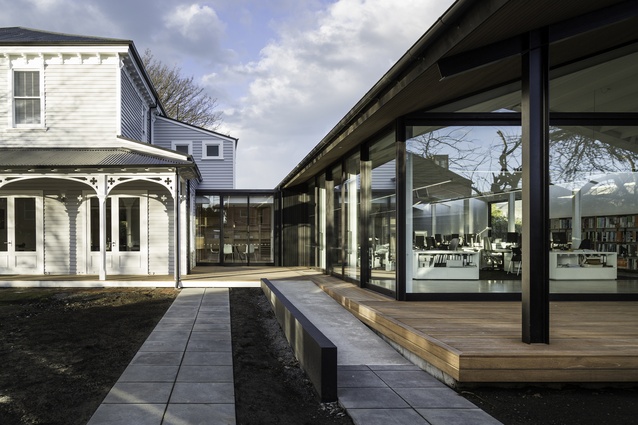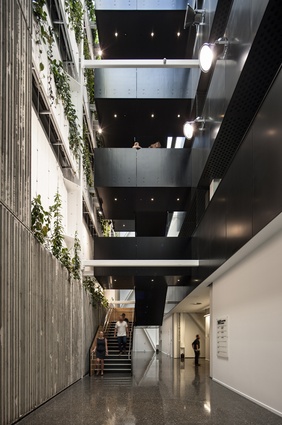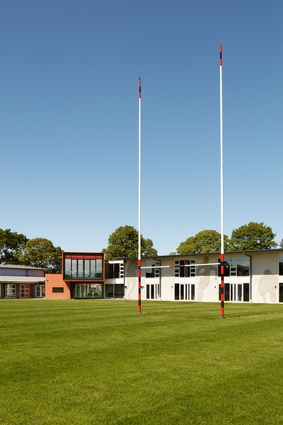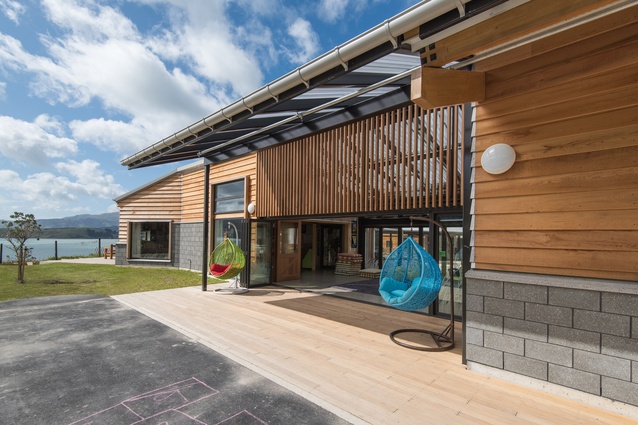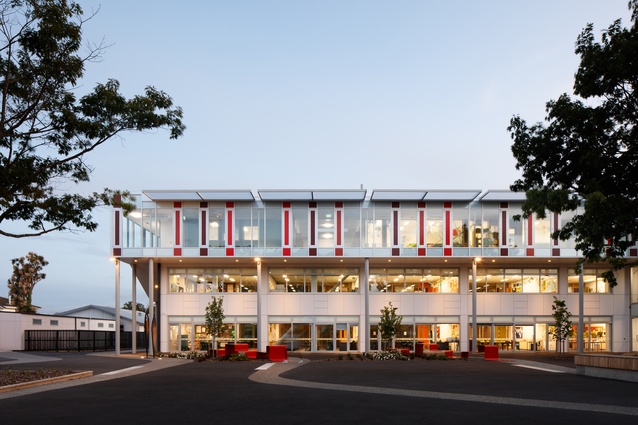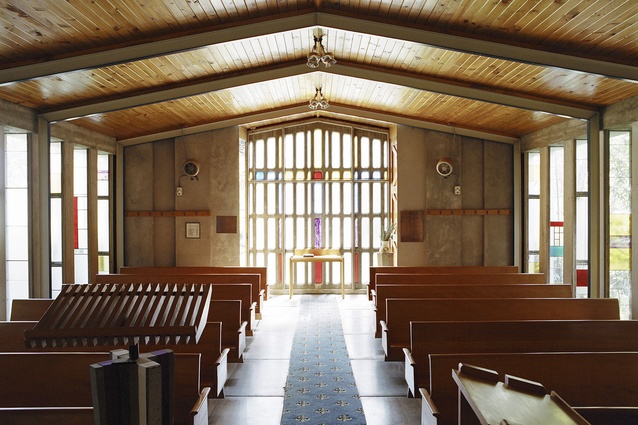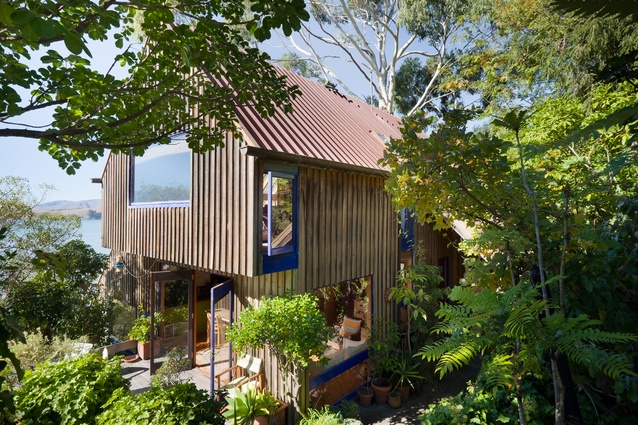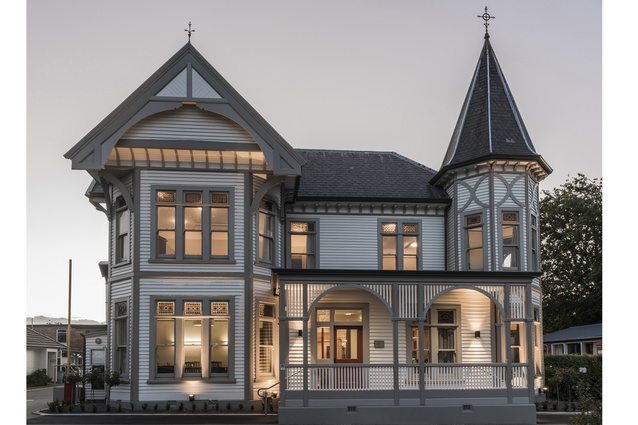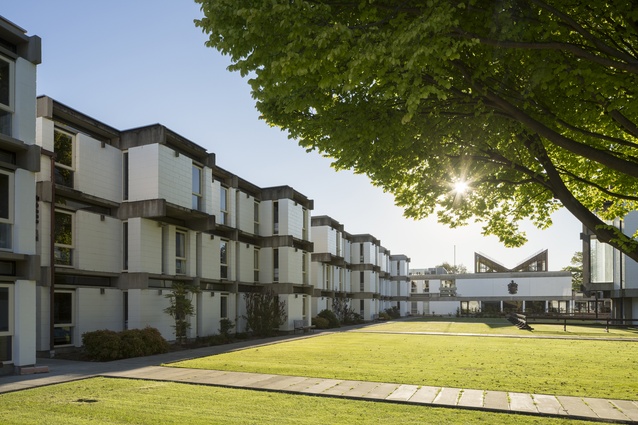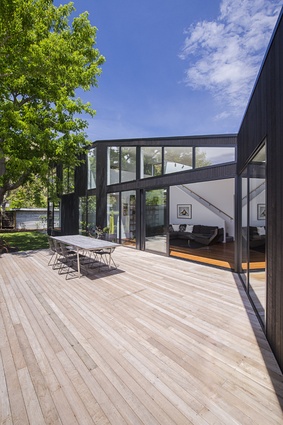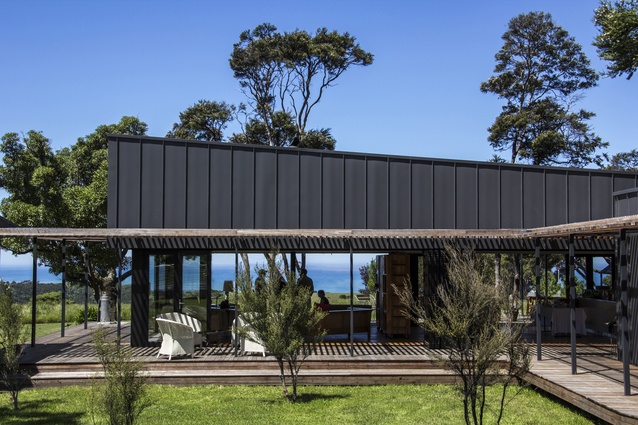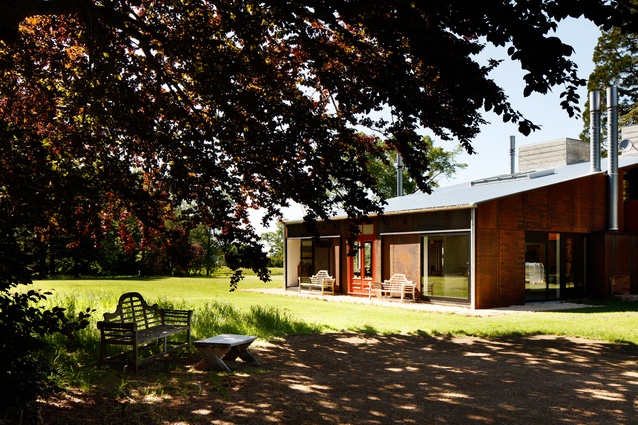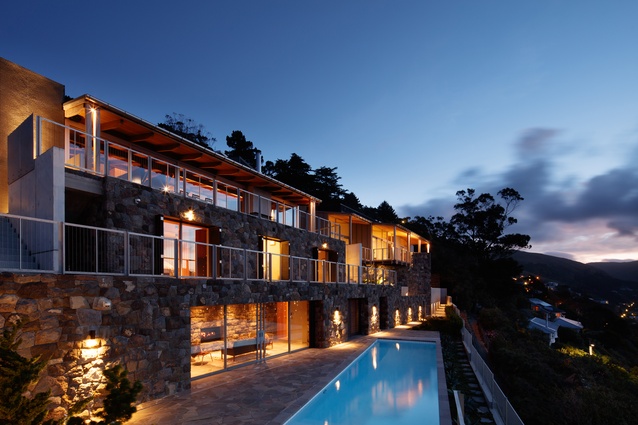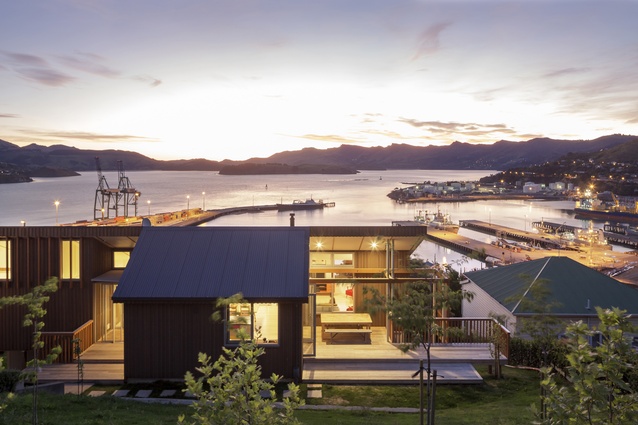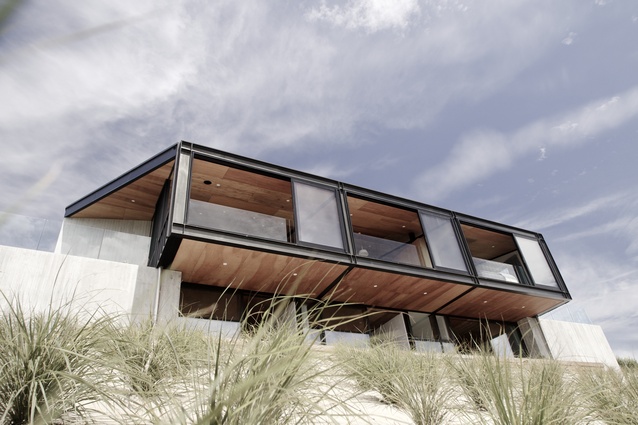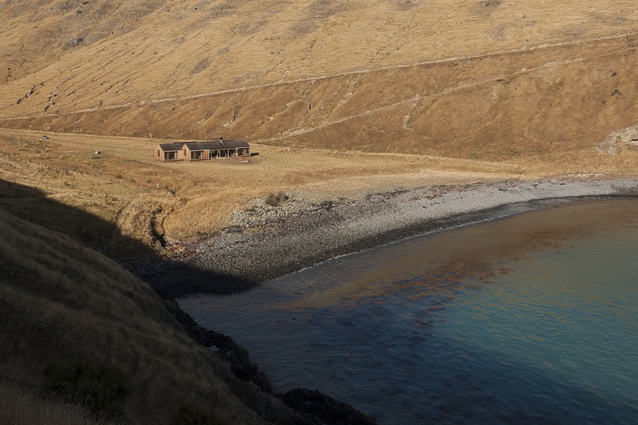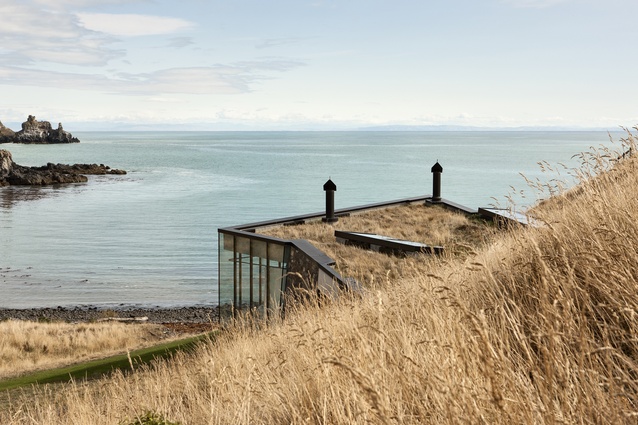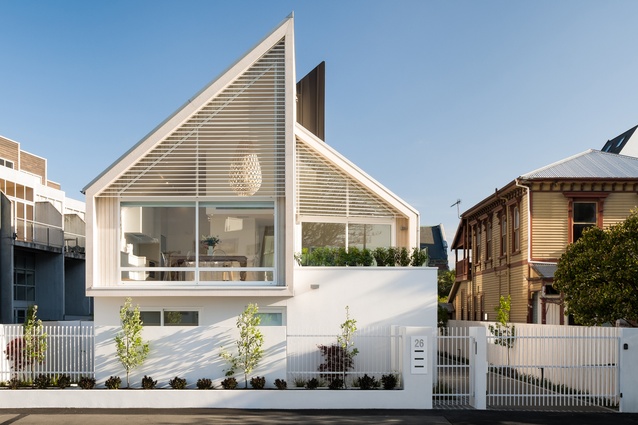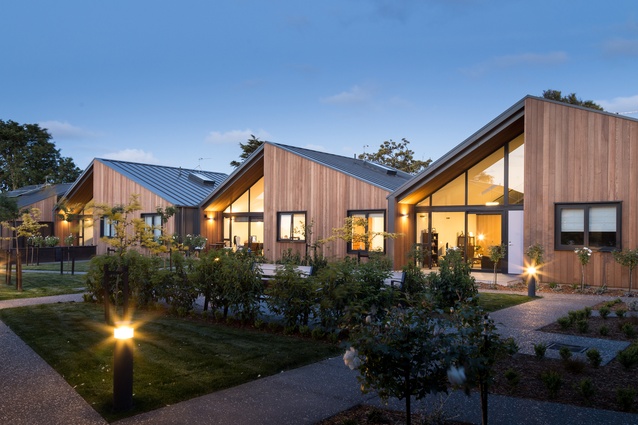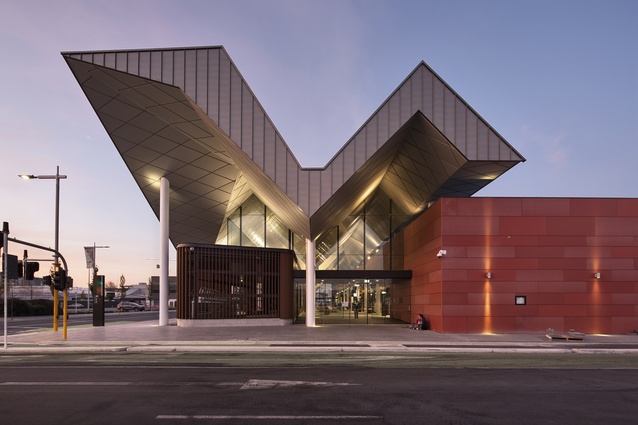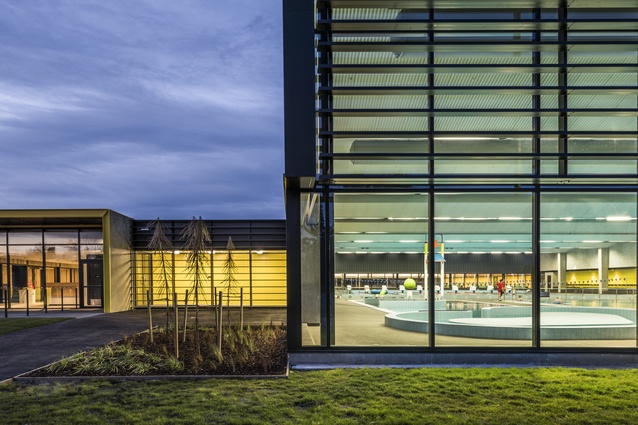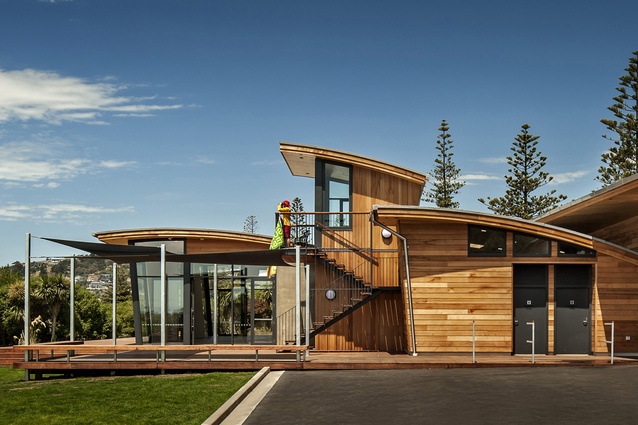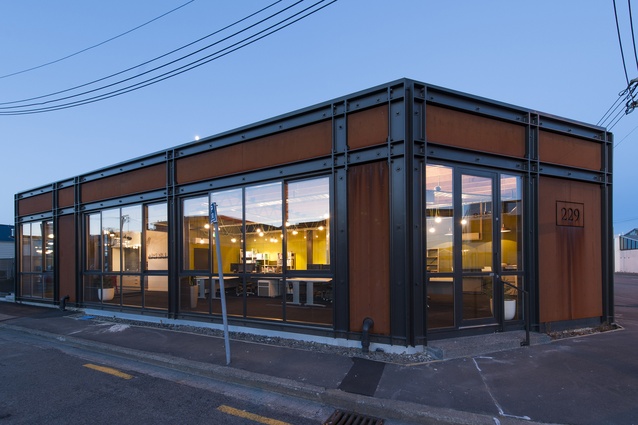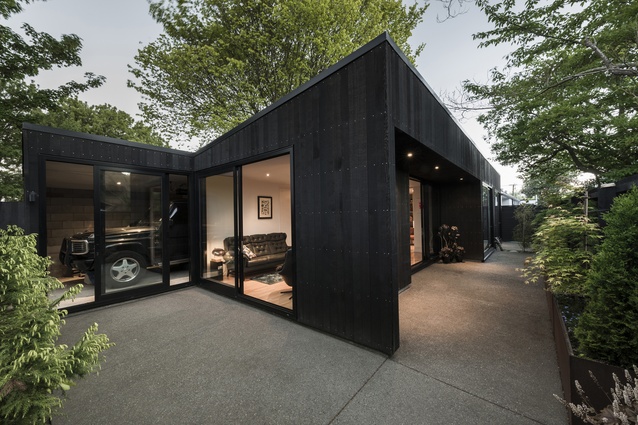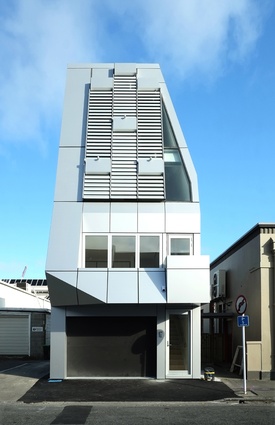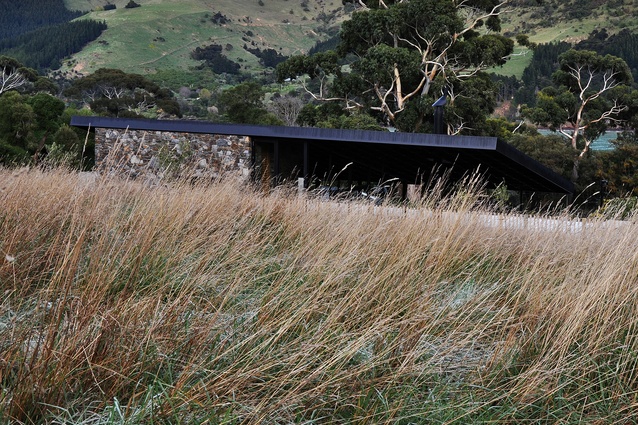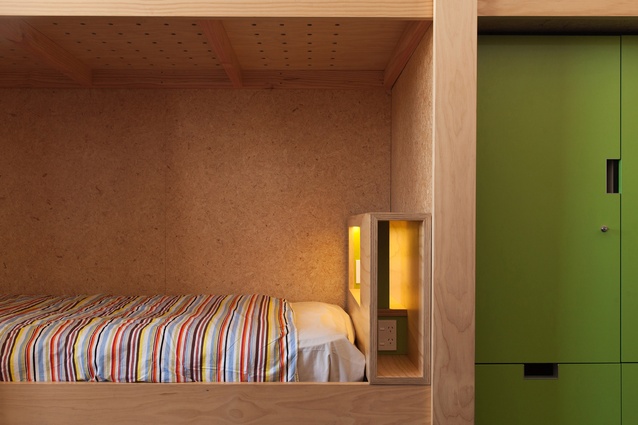2016 Canterbury Architecture Awards
There was a diverse range of high quality buildings in categories such as public, small project and commercial architecture that were rewarded at the 2016 Canterbury Architecture Awards. 28 winning projects were announced at an event at Hagley Oval Pavilion on the evening of Thursday 26 May.
Dennis Chippindale, this year’s awards convenor, led his jury through 40 shortlisted projects over eight “marathon” days of judging. He commented, “Five years on from the ’quakes, these awards provide us with a way to survey the profession – to see how we are responding to the challenges.”
“Building from last year, we have again seen a record number of projects entered, and this year’s jury was lucky to see a wide range of design solutions – from major pieces of infrastructure right down to very small infill projects. Of all the challenges, dealing with drastic population shifts might prove to be one of the most significant. Christchurch needs to be an attractive urban environment – an environment that brings people back to stay,” Chippindale summarized.
Full list of winners with jury citations below.
COMMERCIAL ARCHITECTURE AWARDS:
Sheppard & Rout Offices and Studio by Sheppard & Rout Architects
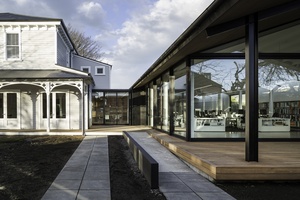
By blending a carefully composed addition with a grand old, two-storied villa, this project exemplifies a well-thought-out approach to rebuilding Christchurch. Beautifully renovated, the villa serves as the front door and meeting room suite for a light-filled studio that connects strongly with the garden setting. There is nothing out of place, inside or out, and the minimal black and white palette gives the project a calming, Zen-like feel.
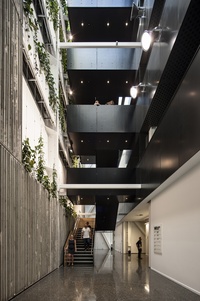
141 Cambridge Terrace/Lane Neave Building by Jasmax
The Lane Neave Building is a subtle and sophisticated contribution to the array of new commercial buildings west of the Ōtakaro-Avon River. The building acknowledges the city’s once formidable modernist past while clearly belonging to its own time. A glass curtain wall, angled to address the river and a bend in the road, defines the main façade while inside and out, ribbed, fair-faced concrete panels are consciously applied for decorative effect. The interior material palette is understated, which emphasises the drama and generosity of the two atria, where twining plants contrast with the solid and sculptural main stair. In a city that will see many concrete, steel and glass buildings emerge in the post-earthquake cityscape, the elegance and restraint of Lane Neave marks it out as something special.
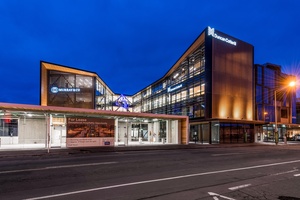
Duncan Cotterill Plaza by MAP
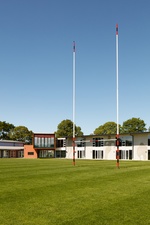
Conceived as a ‘ribbon’, the four-level Duncan Cotterill Plaza office building presents a strongly articulated façade to Victoria Street. The building’s fine veil of fins provide shade, privacy and a rich texture. To the north, the ribbon recedes from the street in deference to Knox Church. In contrast to the main building, an unadorned, single-level retail ‘gatehouse’ follows the street edge, providing the form that contains the building’s courtyard. Elegantly proportioned, Duncan Cotterill Plaza is set apart by its combination of curves and angles, the extensive timber detailing, and the provision of sheltered outdoors public space.
Offices and High Performance Facility by Athfield Architects
Behind a row of oak trees and the old gates of Rugby Park, this office building and gym invigorates a forgotten corner and defies traditional muscularity in favour of a well-considered composition of forms and materials. Out of very little, the architects have intelligently and sensitively trained this building to be efficient, proud and joyful.
EDUCATION AWARDS:
Cholmondeley Children’s Centre by RMBH Architects
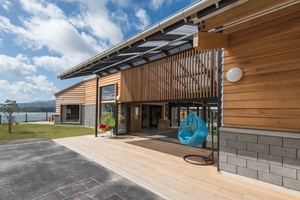
Following the Canterbury earthquakes, this new purpose-built facility was constructed to replace a historic villa that housed a respite care and education centre. Set in the exceptional Governor’s Bay landscape, the new buildings – for accommodation, dining and education – fully encircle a sheltered courtyard. Metaphorically and literally, this is a place of shelter and protection. From the courtyard, generous openings allow easy movement between indoor and outdoor play and learning spaces. Inside, the range of intimate and group-suitable spaces, intelligent use of timber structure, robust materials, colour and playful detailing result in a delightful child-friendly environment.
Resene Colour Award:
Bold primary colours enliven the respective spaces and create contrast with the predominantly natural material palette of timber, concrete and strandboard linings.
Winchester Precinct by Athfield Architects
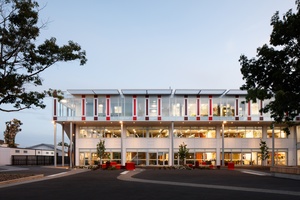
A key part of St Margaret’s College rebuild programme, the Winchester Precinct blends traditional pedagogical design with up-to-date thinking. By creating a wonderful active edge to Winchester Street – with the unusual integration of a public café – the architects have created a thoughtful urban response to the street edge. An internal ‘street’, partially flanked by a double-height cloister, is framed at one end by the college courtyard, which sensitively employs the scale, detailing and materiality of the adjacent buildings. The design has successfully brought some of the more active functions, including dance studios, into view, which activates the school from a variety of angles.
Resene Colour Award:
Inside and out, this project’s balanced used of bright colours against a neutral background is a delight. Rhythmic red highlights run across the exterior while inside, the neutral background of white, grey and timber draws attention to student artwork.
ENDURING ARCHITECTURE AWARDS:
St Andrew’s Church (1960) by Hendry and Mitchener
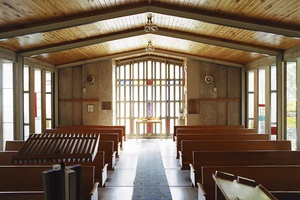
This hidden gem is quietly set back from the main road in the tiny Banks Peninsula village of Le Bons Bay. The unassuming exterior form belies the craftsmanship within, where the spare construction of steel portal frames and pre-cast concrete wall units is directly expressed. In a nod to Basil Spence’s Coventry Cathedral (1950–1962), there are fully glazed spaces between the deep, angular form of the wall units; however, it isn’t until you turn your back to the ply-lined chancel that the sections of hand-painted glass animate the stark interior with colour. Allan Mitchener’s sure design skill is matched in sculptor Tom Taylor’s furniture. Robustly modelled in exposed concrete, the lectern base and altar are balanced by the warmth and geometric play of the timber pulpit and pews.
Rout House (1979) by Jonty Rout – Architect
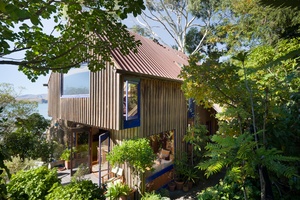
Jonty Rout’s own home is modestly sized yet skillfully crafted. Rout designed the house as a daily retreat from the frenetic pace of the city and, tucked down the end of a shared steep driveway in Governor’s Bay, and sheltered by regenerated bush, the house conveys an immediate sense of privacy and peace. The simple kahikatea board-and-batten-clad exterior and elevated gable forms slowly reveal Rout’s clever play of interconnecting, varied internal spaces around an open central stair. Thoughtful planning combined with exquisite control of light and the deft use of strong colours gives each space a character suited to life’s daily rhythms. Most of all, this house speaks of the high value Rout placed on spaces for living and on architecture’s capacity to provide us with ease, comfort and delight.
HERITAGE AWARDS:
Acland House – ‘Old House’ by Dalman Architecture
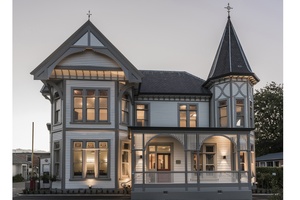
The architects have successfully celebrated the formal and decorative ebullience of this grand house and simultaneously provided their clients with a very functional boarding facility. The Queen Anne-style features of R.W. England’s original design are faithfully restored – the hexagonal turreted corner rooms, dominant projecting gable and arcaded timber veranda still speak of Victorian life and values. A daring architectural move, seamlessly achieved, is the transfer of a substantial feature staircase from one side of the house to the other. The ground floor is now principally a dining room for 150 boarders and, under the elaborate plastered ornamentation and moulded timber door and window frames, an unexpected but welcome stylishness is brought to the daily rituals of high-school boarding.
College House – Replacement Dining Hall & Kitchen by Wilkie + Bruce
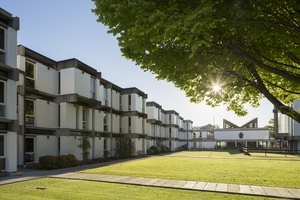
The challenge of rebuilding part of a city’s heritage is boldly illustrated in this recreation of College House dining hall and kitchen. It is a project that exemplifies how, within a sympathetic design framework, subtle spatial, functional and structural changes can be achieved. Blending salvaged elements with a new, lightweight structure, this project successfully recreates the visual and emotive experience of a grand dining hall.
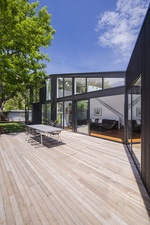
HOUSING AWARDS:
Clark St House by AW Architects
On a narrow Sumner section, this modest home – a rebuild option for clients who were red-zoned further up the valley – wraps considerately around a large maple tree and a private courtyard. From a low-slung street frontage, the house subtly bends and folds up to accommodate a second level to the rear. With a simple palette of new and recycled materials, clever planning and intelligent composition, the architects have created a fine contemporary home.
Conway Flat – ‘Common House’ by Warren and Mahoney Architects
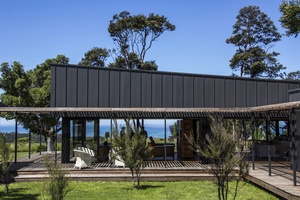
A series of rural sheds, connected with canopies and timber walkways, sits modestly amongst kānuka on a gently sloping hillside overlooking the Pacific Ocean. This relaxed composition of simple forms from different eras combines with an ease and comfort that this magnificent location demands. The effort taken to produce this crib-like simplicity is hidden within what appears to be an instinctive use of material, colour and form.
Homebush by Athfield Architects
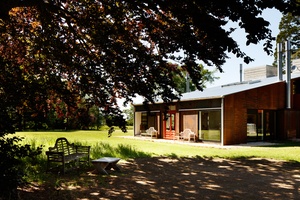
This contemporary country villa, a rebuild of one of New Zealand’s oldest homesteads, which was felled by the earthquakes of 4 September 2010, both reflects and exudes the long history of site and family. In a lush pastoral setting, with an intuitive use of unlikely forms and raw materials, this romantic home delights the soul.
Resene Colour Award:
The well chosen materials and colours of this contemporary design cleverly balance the agricultural and industrial contexts of the site and the histories of the previous house. Corten steel cladding, which will deepen to a red-brown as it weathers, and two brown-red cantilevering decks, provide subtle links to the red brick of the previous house.
Scarborough House by Athfield Architects
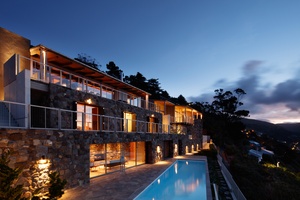
Scarborough House, perched on the steep Whitewash Head hillside, is a delight of space and workmanship. Every aspect of this house is detailed and built with a passion bordering on obsessive. The intimate living space is the building’s heart, and the spatial experience progresses through a sequence of open and closed, light and dark spaces. The overall effect is intimate and calming, with the simple palette of neutral colours and materials allowing the owner’s art collection to add to the overall ambience of this exceptional home.
House with Villa Silhouette by Irving Smith Jack Architects
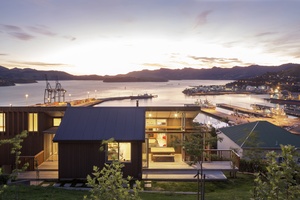
This replacement for a ’quake-damaged house is a quiet gem nestled into a steep slope above the port of Lyttelton. The house, which speaks softly of the past, is intelligently considered and beautifully composed. It is a small home for the future.
Resene Colour Award:
With its subtle combination of soft natural colours, this house blends quietly into the Lyttelton hillside. The timber frame that moves through the villa accentuates the sculptural ceilings. The kitchen’s intense splashes of primary colour enliven the living space.
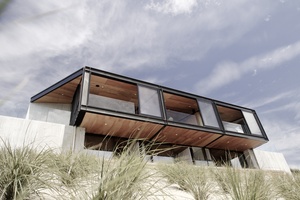
Ophir Lane House by Architects’ Creative
Anchored confidently on a ridge high above Christchurch, this strong yet elegant house is full of surprises. The house delights in expansive views of the Southern Alps, but also counter these big views with spaces of calm reflection. The interior, which unfolds with refinement and integrity of form, detail and material, feels immediately comfortable.
Scrubby Bay by Patterson Associates
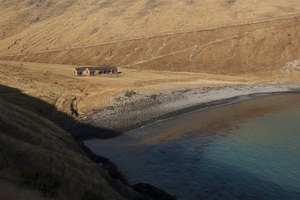
With a total absence of landscaping, Scrubby Bay takes the appearance of a simple arrangement of modest farm buildings set in an isolated bay. Until you notice the pool stretching out behind. The meticulously designed Annandale farmhouse / bach is composed of a pair of crisp eaveless forms with pitched roofs. Set side-by-side and precisely offset from each other, they contain lofty volumes that provide a counterpoint to the expansive views of the rugged Banks Peninsula landscape. While the massive central fireplace is constructed from rubble masonry, and thin strips of bluestone bring elegance shower, Scrubby Bay is overwhelmingly about the materiality of timber. The macrocarpalined interior, in particular, provides a rich sensory experience.
Seascape by Patterson Associates
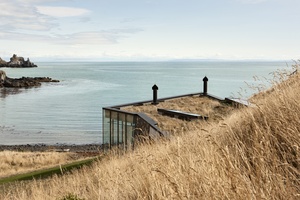
A wonderful retreat, Seascape is a modern interpretation of a cottage, albeit one that is tucked into the rock escarpment of a secluded bay. This small house is an exceptional example of design pared back to key functions and the elemental beauty inherent within material restraint. With onsite water harvesting and wastewater treatment, and a sub-project of extensive reforestation and re-vegetation, Seascape illustrates a commitment to the preservation and restoration of the local environment. This is a great example of contemporary architecture responding to the natural beauty of rugged New Zealand coast.
HOUSING – MULTI-UNIT AWARDS:
26 Salisbury Street Townhouses by Warren and Mahoney Architects
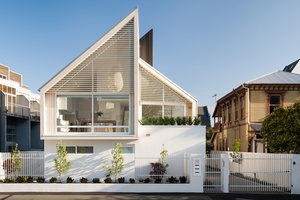
These four-bedroom, three-level townhouses cleverly respond to their tight, inner-city constraints. Sharp gabled forms (an acknowledgement of Warren and Mahoney’s early modernist beginnings) influenced by the planning envelope extend out to the street to provide a strong and active presence. This is one of the first Christchurch’s building projects utilising cross-laminated timber panel technology, which replaces traditional timber framing. Partially expressed internally, this provides character and contrast with white plasterboard surfaces among a wider material palette that includes black zinc and bleached cedar. These townhouses are an outstanding exemplar for medium density, central-city living.
Mary Potter Apartments by Warren and Mahoney Architects
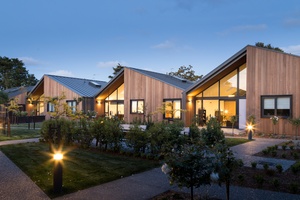
Set around an intimate, shared courtyard, the Mary Potter Apartments are designed with occupants needs at heart. Thoughtfully scaled and detailed, each unit contributes to the overall harmony of the community. Living spaces are carefully arranged to enjoy courtyard views – but not at the expense of privacy, while charming gables of natural cedar extend the language used in the original 2006 development. This project sets a high bar for retirement living.
PUBLIC ARCHITECTURE AWARDS:
Christchurch Bus Interchange/ Whakawhitinga Pahi by Architectus
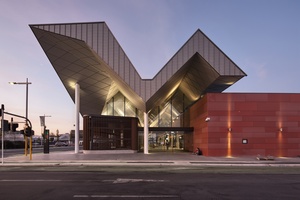
Whakawhitinga Pahi, Christchurch’s new public transport hub, is a sea change in the experience of commuter bus transport. The carefully considered functional aspects required to cope with high traffic are cleverly balanced by an airy, lightfilled hall that sits under an impressive roof structure. From the exterior, this building addresses the retail and civic aspects of a growing city, with terracotta coloured panels providing a visual link to the remaining brick facades of the nearby collapsed buildings.
EA Networks Centre, Ashburton by Warren and Mahoney Architects
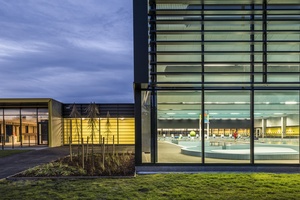
Situated on a terrace alongside the Ashburton River, this sporting facility for mid-Canterbury should be a catalyst for the development of a wider recreation precinct. This building, with its heroic canopy and timber supporting structure, is destined for regional icon status. Success here is multi-faceted, and apparent in the cost-effective materials interwoven with local materials, the sustainable features and the abundant access to natural light. This confidently planned and detailed building is well supported by the local sporting community.
Sumner Surf Lifesaving Club Pavilion by Wilson & Hill Architects
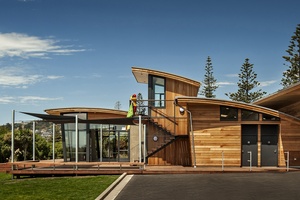
The Sumner Surf Life Saving Club Pavilion is a new focal point for the Sumner community. Functionally well thought out, the building’s excellent relationship with the street is balanced on the seaward side by a large timber deck that provides an informal face to the beach. Sloping walls, angled soffits and curving roofs can be interpreted as waves within the building’s forms. The combination of cedar weatherboards, which will weather naturally and blend the structure with the natural environment, and precast concrete panels, which respond to the urban street frontage, creates a balanced aesthetic that is wholly appropriate to the context.
SMALL PROJECT ARCHITECTURE AWARDS:
229 Lichfield Office by Young Architects
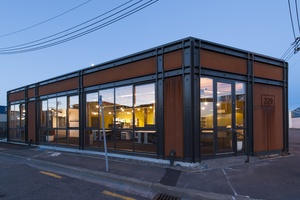
This reinvention of an earthquake-damaged building speaks of resilience and survival. The structure is expressed externally through oversized steel members that also showcase the structural grid of the building. The gritty and low-maintenance exterior is, however, broken up along the street frontage with sections of glazing that enable the building to display a soft and warm interior. Aesthetically, the building successfully reflects the nature of business undertaken by the structural engineers who occupy the interior. This is a good example of what can be achieved within the constraints of a tight budget.
Bachelor Pad by Colab Architecture
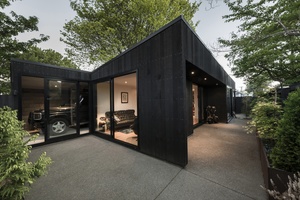
This compact, well-appointed “pad” sits on a long and narrow inner-city site; it is, thanks to the clever planning of carefully composed and flexible spaces, a surprising private residence. With interior spaces that open up to north- and west-facing courtyards, the spatial qualities of this small home are amplified right out to the site boundaries. This provides a good example of how a small footprint can be made to feel much larger through the clarity of relationships between inside and out. With help from a simple palette of honest materials and site-surrounding mature trees, the architects have created a haven that seems far removed from the reality of the inner city setting.
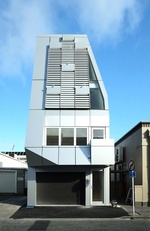
MegaTower by Thom Craig Architects
Standing proudly on a tiny, five-metre by five-metre site within the Merivale shopping precinct, where public toilets were once located, is a delightful and surprising vertical composition that challenges the way we use urban space and, indeed, how much space we actually need. This tower, cleverly crafted and sculpted to maximise usable space while still complying with city plan plot-ratio requirements, is a ‘Tardis’. It contains all the expected functions of accommodation, yet the inner workings have been cleverly interwoven and vertically stacked around a light-filled atrium void. Playful and thought provoking, this engaging piece of architecture clearly has a higher calling.
Olive Grove by Patterson Associates
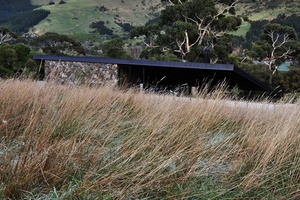
An impressive cantilevered timber roof form contributes a distinctive identity to this pavilion-like structure, which contains a multi-purpose room, changing rooms and a north-facing terrace that overlooks a swimming pool and tennis court. Surrounded by an existing olive grove, and located on a gentle west-facing slope, the building is orientated for optimum sun and views and anchored to its site via robust yet exquisitely crafted stone walls. The overall material palette of concrete, stone and timber is elevated though great design detailing and excellent craftsmanship. It is a composition of lightness and mass.
St Bede’s College Durham Dormitory by Herriot + Melhuish: Architecture (HMA)
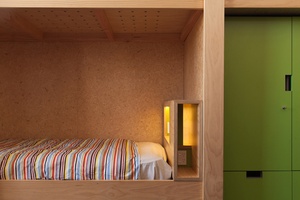
At St Bede’s Durham Dormitory, overscaled timber bunk bed units, arranged in blocks of four, divide large dorm rooms into manageable spaces. The architects have effectively used the central function of the building (a bed and space of one’s own) as the fulcrum of the design without compromising the heritage elements of the external walls and windows. The units, completely integrated with storage and vital amenities (such as power sockets for handheld devices!), are solid and muscular – perfectly suited to years of robust use while creating a welcoming first home-awayfrom- home for young St Bede’s boarders.
Resene Colour Award:
Effective use of a range of cheerful colours personalises each boy’s space and emphasises the considered craftsmanship of the bunks.
All winners of the 2016 Canterbury Architecture Awards are eligible for shortlisting in the New Zealand Architecture Awards, which will be decided later in the year, and announced in November.

